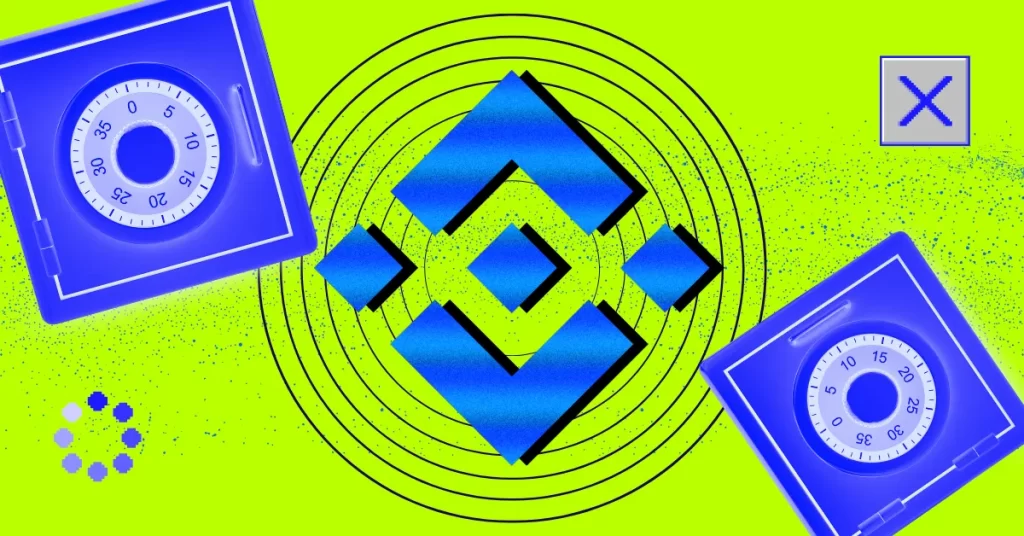
The post Unveiling Binance’s Proof-of-Reserve Stability Amid Regulatory Challenges- Should We Trust Binance? appeared first on Coinpedia Fintech News
Binance has undeniably risen to prominence as one of the leading global platforms. Boasting an extensive range of trading pairs, a user-friendly interface, and a reputation for innovation, Binance has captivated the attention of millions of crypto enthusiasts worldwide.
However, recent regulatory troubles and its exit from Canada have cast a shadow of doubt over the exchange’s operations, raising pertinent questions about the veracity of Binance’s proof-of-reserve and ultimately challenging the level of trust we should place in the platform.
By scrutinizing Binance’s proof-of-reserve and evaluating its current on-chain metrics amidst regulatory challenges, we can get a rough idea of Binance’s current stability in the market and whether Binance is a reliable platform worthy of our trust.
Binance’s Halt In Operations Signals FUD
In the past period, Binance has faced significant scrutiny, with numerous lawsuits filed against the exchange. Additionally, there have been reports indicating that Binance may have been involved in illicit activities, although Binance has denied these allegations.
Binance’s recent legal conflict with a regulatory body in the United States has resulted in several banks severing their connections with the exchange to ensure the protection of their customers’ funds. Most recently, WestPac, Australia’s oldest bank, has announced its decision to halt transactions to and from Binance. By examining Binance’s on-chain metrics, we can gain a better understanding of its current market position.
Bitcoin PoR Declines To CFTC-Level
Binance’s controversial movements and recent news have created a concerning situation among investors. At the beginning of May, Binance’s Bitcoin PoR stood at a net balance of 6,43,520.677, with a net customer balance of 5,41,579.563, representing collateralization of 118.82%.
However, since then, the PoR level for BTC has been declining following a massive spike in exchange outflow on 7 May, which is 30,889 BTC.

Bitcoin exchange outflow refers to the movement of Bitcoin from cryptocurrency exchanges to external wallets or addresses. It represents the number of Bitcoins being withdrawn or transferred out of the exchange.
This metric is significant as it indicates investor behavior and sentiment. A spike in exchange outflow suggests that investors are moving their Bitcoin holdings away from exchanges, potentially for reasons such as increased security concerns or a desire for greater control over their assets.
A spike in Bitcoin outflow from Binance and a declining Proof-of-Reserve (PoR) has instilled fear among investors, prompting a shift towards self-custodial wallets. Concerns over Binance’s reliability have led investors to withdraw their funds, seeking the safety and control provided by self-custodial wallets. The declining PoR raises doubts about the exchange’s ability to back the funds it holds.
Binance’s Withdrawing & Depositing Transactions Touch Multi-Year Low
In contrast to the commonly used metrics of exchange inflow and outflow, which track the overall volume of Bitcoin transferred within exchanges, the distinction between withdrawal and deposit transactions provides a more insightful depiction of market trends. Unlike inflow and outflow metrics, which can be influenced by a small number of influential individuals, the total value of each transaction sent to exchanges is taken into account, offering a more comprehensive representation of the market as a whole.
However, when focusing on the number of individual transfers made through depositing and withdrawing, this metric provides a more accurate picture of whether investors are favoring the exchange for their crypto activities.

By examining on-chain data, it is evident that Binance’s depositing transactions have plummeted to a 3-year low, with the metric hitting a level of 6,891, last seen in January 2020. Similarly, withdrawing transactions have also reached a low point of 464, a level witnessed two years ago in November 2021.
This data reveals two significant situations. Firstly, the decrease in user activity on Binance can be attributed to the suspension of AUD payments. This suspension has likely discouraged users from engaging in transactions on the platform. Secondly, the low number of depositing and withdrawing transactions indicates that investors are hesitant to carry out any trading activities during this market downturn.
Spot Trading Volume Drops By 50%
In April, the spot trading volume on Binance, the world’s largest cryptocurrency exchange, experienced a decline for the second consecutive month, plunging by 48% in the face of dwindling transaction levels within the industry, as reported by CCData. The volume reached $287 billion, marking the second-lowest level observed since 2021.

Moreover, Binance’s market share also experienced a decline for the second month in a row, dropping to 46%. These figures indicate a challenging period for Binance, reflecting a broader trend of reduced trading activities and a potential shift in market dynamics among cryptocurrency exchanges.
Despite the decline in spot trading volume, Binance maintains a formidable position as the leading exchange. Competitors Coinbase and OKX, ranked second and third in terms of volume, only accounted for a mere 5.60% and 5.39% of the total spot trading, respectively.
This data underscores Binance’s dominant market share and highlights its continued prominence in the cryptocurrency exchange landscape. While facing some challenges, Binance’s substantial lead over its closest competitors reaffirms its position as a key player in the industry.
Closing Thoughts
Is Binance truly facing dire straits? Examining the regulatory landscape, it is evident that the crypto exchange finds itself in turbulent waters as it grapples with ongoing conflicts with US regulators. The repercussions of this regulatory scrutiny are apparent in the aforementioned on-chain metrics, painting a picture of growing fear, uncertainty, and doubt (FUD) among investors.
However, it is important to note that Binance is a long way from experiencing a collapse akin to the infamous FTX incident. The exchange maintains a strong position due to its robust Proof-of-Reserve (PoR) system, which ensures full backing of crypto funds. Additionally, Binance remains the preferred choice for a substantial number of users, solidifying its status as a leading exchange in the crypto space.

 2 years ago
129
2 years ago
129














 English (US) ·
English (US) ·